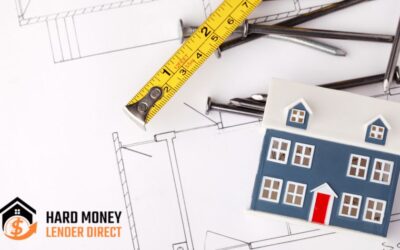Exploring the World of Hard Money Loan Rates
Hard money loans are alternative financing options for borrowers who need funding for real estate investment projects. Unlike traditional loans, hard money loans are typically short-term and based on the value of the property being used as collateral. The interest rates for hard money loans are higher than traditional loans due to the higher risk involved. However, market conditions can also have a significant impact on hard money loan rates.
The interest rate on a hard money loan is typically higher than the rate for a traditional loan from a bank. This is because hard money loans are considered to be a higher risk for lenders. The lender is taking a risk by lending money based on the value of the property, rather than the borrower’s creditworthiness. To compensate for this added risk, hard money lenders typically charge higher interest rates.
Hard money loan rates can range from 8% to 18% or more, depending on the lender and the terms of the loan. Some lenders may charge a fixed interest rate, while others may offer a variable rate that changes based on market conditions.
In addition to the interest rate, borrowers should also consider the origination fee when shopping for a hard money loan. An origination fee is a one-time fee that is charged by the lender to cover the cost of processing the loan. This fee can range from 1% to 5% of the loan amount and can add significant cost to the loan.
Another important factor to consider when shopping for a hard money loan is the loan-to-value (LTV) ratio. The LTV ratio is the amount of the loan compared to the value of the property being used as collateral. A higher LTV ratio means that the borrower is borrowing more money relative to the value of the property, which can increase the risk for the lender and result in a higher interest rate.
Borrowers who have a lower credit score or limited financial resources may also face higher hard money loan rates. This is because these borrowers are considered to be higher risk, and the lender may charge a higher interest rate to compensate for the added risk.
In addition to the interest rate and origination fee, borrowers should also consider the loan term when shopping for a hard money loan. The loan term is the length of time that the loan is outstanding, and it can range from a few months to several years. A longer loan term may result in lower monthly payments, but it can also result in higher overall costs due to the accumulation of interest over time.
Borrowers who are shopping for a hard money loan should also consider the reputation of the lender and the terms of the loan agreement. It is important to work with a reputable lender who has a proven track record of providing fair and transparent loans. Borrowers should also carefully review the terms of the loan agreement, including the interest rate, origination fee, loan term, and repayment schedule, to ensure that the loan meets their needs and that they understand the costs and risks associated with the loan.
How Market Conditions Affect Hard Money Loan Rates
One major factor that affects hard money loan rates is the state of the economy. During times of economic growth and stability, interest rates tend to be lower, making it easier for borrowers to obtain hard money loans. On the other hand, during times of economic uncertainty, interest rates may be higher due to the increased risk involved. As loan aggregators/note buyers emerged in the market place in the last 5 to 7 years, this became more evident. Wall Street’s appetite for securitizations of pools of these loans drove demand that dictated rates. As inflation roared in 2022 and the Fed raised rates, the appetite for risk changed driving hard money loan rates higher.
Another factor that can impact hard money loan rates is the state of the real estate market. During times of high demand for real estate, hard money loan rates may be lower, as there is a higher demand for financing for real estate investment projects. Conversely, during times of lower demand for real estate, hard money loan rates may be higher due to the increased risk involved.
In addition to the economy and real estate market, the availability of funding can also impact hard money loan rates. The type of capital a hard money lender can raise can drive up interest rates, making it more expensive for borrowers to obtain hard money loans. In other words, if the capital investing in that lender requires a higher rate of return based on their perceived risk in the market, the lender is forced to charge higher rates to deliver that return.



